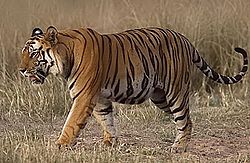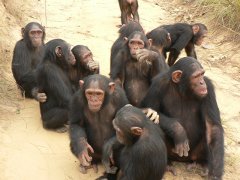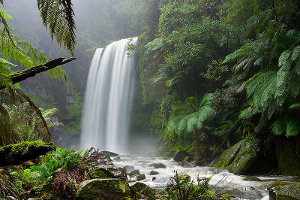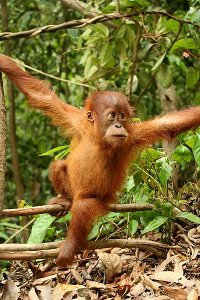
Author and Page information
- This page: https://www.globalissues.org/article/177/nature-and-animal-conservation.
- To print all information (e.g. expanded side notes, shows alternative links), use the print version:
As explained in the biodiversity section of this web site, conservation of ecosystems and the species within them would help to maintain the natural balances disrupted by recent human activity.
A report from the global conservation organization, WWF, has suggested that since 1970 the pressure we exert on the planet has almost doubled and the natural resources upon which we depend have declined by more than 33% .
However desirable conservation may seem, in reality it is a struggle.
On this page:
- It’s an Uphill Struggle to Conserve
- Declining Number of Large Carnivores
- Declining Number of Tigers
- Declining Number of Lions
- Declining Number of Rhinos
- Near Extinction of Vultures in India
- Declining number of polar bears
- Declining number of penguins?
- Declining amphibian populations
- Declining number of monkeys, apes and other primates
- AIDS Research also Affected
- New species still being found; makes conservation more important
- Sustainable Development and Conservation
- Species at risk elsewhere
- Corporate Accountability
- Low Frequency Active Sonar Affect Whales, Dolphins and Other Sea Life
- More Information
It’s an Uphill Struggle to Conserve
Unfortunately, despite the effort put into conservation by organizations and activists, their work can easily be undermined by those who have other interests. This occurs, for example, from habitat destruction, illegal poaching, to influencing or manipulating laws designed to protect species.
The current form of globalization has also been criticized for ignoring sustainable development and environmental concerns. For many years, critics, NGOs, activists and affected peoples have been accusing large corporations for being major sources of environmental problems.
Consequently, helping species and ecosystems to survive becomes more difficult.
Declining Number of Tigers

Take for example the continued declining numbers of tigers, the largest of the big cats.
The population of tigers is believed to have declined by 95 percent in the last century.
It’s not just tigers either. Rare leopards, deer and other animals are also being illegally traded and many other animals are dwindling in numbers, some of which are mentioned below.
Declining Number of Lions
Declining Number of Rhinos
AIDS Research also Affected
In 1999 scientists revealed what they believed was the origins of AIDS. The source comes from a type of chimpanzee that is immune to the virus. Unfortunately, the forests in which they live are being opened up by logging companies, resulting in a destruction of the chimpanzee’s habitat.
Also hunting of these and other animals is on the increase in the forest. All these factors are preventing further studies of the possible cures for AIDS. (For more about the immense problems around the world from AIDS, including political issues, check out this web site’s section on AIDS.)
New species still being found; makes conservation more important
As reported by University of California, Berkeley, using DNA comparisons, scientists have discovered what they have termed an evolutionary concept called parallelism, a situation where two organisms independently come up with the same adaptation to a particular environment.
This has an additional ramification when it comes to protecting biodiversity and endangered species. This is because in the past what we may have considered to be one species could actually be many. But, as pointed out by scientists, by putting them all in one group, it under-represents biodiversity, and these different evolutionarily species would not get the protection otherwise needed.
An example of this can be seen with the African elephant, where forest dwelling species are found to be different species to the ones found in the savannahs, as reported by the Telegraph newspaper. As the article also points out, Instead of assuming that 500,000 elephants exist in Africa, it now seems that there are many fewer of each kind, and
they are both much more endangered than we presumed
, said Dr Georgiadis [of the Mpala Research Centre in Kenya.]
In June 2002, it was announced that two never-before described species of monkey have been found in Brazil’s Amazon rainforest. These remarkable finds shows that there is still much to discover and learn about biodiversity in general.
Conservation, protecting and preserving is therefore more about the species in question; it requires the protection of their habitat too, which in turn helps many other species in those same areas.
Sustainable Development and Conservation
The factors described above that affect AIDS research also highlights a deeper aspect of other related issues affecting conservation. In Europe, for example, threats such as increased agricultural/land requirements, hunting, persecution and land-claims etc are contributing to a shrinking biodiversity in Europe.
Efforts to move towards sustainable development and conservation efforts are therefore beginning to be based on the understanding that issues such as poverty need to be addressed, to provide people with alternatives.
Poverty and Conservation; Need to address root causes

On April 16, 2003, Britain’s BBC aired an award-winning documentary titled Ape Hunters, about how apes in Central Africa are being hunted for their bushmeat, almost to extinction.
The documentary also explored the inter-relationship and challenges between
- Commercial logging
- Increased bushmeat consumption, and
- How poachers fared when offered sustainable development as an alternative to hunting
The documentary highlighted that while in the wealthier parts of the world we see conservation as desirable and easily recognize the importance and urgency of protecting the rapidly declining numbers of the great apes, what is less recognized are the complex multitude of causes, of which the wealthy world also plays a negative part. In effect, it has been easier to blame others
and almost ignoring our own impacts.
That is, as well as hunting for bushmeat leading to concerns about dwindling numbers of animals, the causes of the increase in bushmeat consumption need understanding.
For example, in small villages on the frontiers of the forest, individual bushmeat consumption has been part of local customs for a long time, as there are no domesticated animals, and the forest has been the source of survival for villagers, for most of their requirements.
However, increased poverty in nations such as Cameroon has forced more villagers to the bigger cities to look for work. This has brought the custom of bushmeat consumption to a larger population, thus increasing demand for it.

In addition, increased commercial logging (about 50% of the timber goes to Europe, the documentary pointed out) has resulted in dense forest being opened up allowing hunters and poachers to go further into the forest than ever before.
Bushmeat hunting is more profitable than other options, even though some hunters pointed out that if there were other options, they would not hunt. Occasionally, illegal logging and commercial logging company employees such as truckers have also been involved in illegal trading of bushmeat.
Sustainable development alternatives have been attempted. For example, projects have promoted the protection of the apes, rather than hunting. This has been through encouraging and provide real incentives for hunters themselves to protect the apes. A focus has been to attract tourists, who would be willing to pay to see these animals in the wild, thus sustaining the people and paying for conservation and other measures.

Although this approach has proven successful in other places, it is unfortunately not always guaranteed to work. The documentary followed some former-hunters who were attracted to the idea, but also highlighted the difficulties in this. For example:
- Causes of poverty were still not being addressed, so it was hard for people to go for alternatives.
- To pay former hunters, the projects of course needed proof that these people were indeed attempting to find the apes and allow those apes to slowly get familiar and accustomed to humans, so that tourists could eventually be guided in. However, finding and photographing these apes in the dense jungle could be so challenging that sometimes it would seem like a futile effort.
- Although there were successful sitings and eventual interaction, the promise of tourists has not materialized, and so funding was dwindling.
- The villagers had also been encouraged to grow small plots of cash crops, such as cassava and plantain. As these were growing near the forests, occasionally a group of apes would destroy those crops in their search for food, causing anger amongst the villagers whose immediate survival depended on those crops, as many people would go hungry otherwise.
In detailing the impact of the logging companies in opening up the forests for increased destruction of habitat and more poaching, some African development organizations also pointed out that western consumer life styles therefore had an impact on the dwindling numbers of apes, because those demands fuel a lot of deforestation.
Species at risk elsewhere
While the documentary mentioned above focused on Cameroon, other places in Africa and around the world also show similar relationships between poverty, consumption, and environmental destruction.

The fourth most populous country, Indonesia, houses 10 percent of the earth’s remaining tropical forests. Not only are forests depleting year by year, but species that depend on the forests are also disappearing, and these species are needed to ensure a stable ecosystem.
The person of the Forest
, or Orangutan, is one such species at risk due to corruption, excessive logging and poaching. Palm oil plantations have recently been increased because of world demand and their use as biofuels. Mining and fragmentation by roads are other problems they face.
Other species at risk in Indonesia include the Sumatran Tiger, Sumatran and Javan Rhino and the Asian Elephant.
See the following for some more information on related issues:
Corporate Accountability
Another source of problems that can affect an environment and the species that live in it stems from poor or careless industrial practices or management of industrial waste by government and large corporations. In Russia, for example, radioactive waste is threatening the Arctic region. The figures and impact of this mentioned in the previous link suggests that the amount of radiation is similar to that which was present at the Chernobyl incident in 1986.
The Gold industry has also left a set of environmental, social and political problems in its wake. For example, a dam on a gold mine owned by Aurul SA broke, spilling waste water, highly contaminated with cyanides and heavy metals. From the river in Romania it made its way into Hungary. Amongst various other things, according to the World Wide Fund for Nature, WWF,
- A rare species of otter, that was only 400 strong before the spill can no longer be seen.
- More than
100 tonnes of dead fish have been collected from the river’s surface—but many more are believed to be lying on the river bottom. In addition to those species directly affected by the toxic spill, there is a secondary danger to all species which feed on anything living in the river
. - Farmers have reported dead or blinded livestock.
- The ecological damage has been huge and the cost estimates are still to be completed. Some scientists fear that it will take many years to restore the waters.
WWF’s special coverage of this issue is no longer available online, but they have a report about it which has further details.
The corporate-led form of globalization that we see today also affects how natural resources are used and what priorities they are used for. This site’s section on corporations and the environment looks into some of these issues further.
There are countless other examples of how industrial run-off or other practices has caused a lot of environmental damage. And much of it is for our wasteful lifestyles, but as the following quotes highlight, these are examples of working for the wrong kind of efficiency.
It is true that cutting down forests or converting natural forests into monocultures of pine and eucalyptus for industrial raw material generates revenues and growth. But this growth is based on robbing the forest of its biodiversity and its capacity to conserve soil and water. This growth is based on robbing forest communities of their sources of food, fodder, fuel, fiber, medicine, and security form floods and drought.
The closure of industries faced with cheaper goods produced by foreign competitors is correctly labeled as the efficiency of a market economy. But as the automobile engineers said when they built those five hundred horsepower gas-guzzlers for a world that truly wanted efficient cars,
We are working for the wrong kind of efficiency.
Low Frequency Active Sonar Affect Whales, Dolphins and Other Sea Life
The United States Navy and NATO have been using and testing Low Frequency Active Sonar (LFAS) to detect enemy submarines. Many dolphins and whales who use their own sonar to navigate the oceans have been severely affected. The sound is so loud (over 235dB) that it can and kill and maim whales, dolphins and sea life. LFAS is known to be harmful to humans as well.
Global protesting and four lawsuits have convinced the US Navy to end its Low Frequency Active Sonar (LFAS) tests early in the waters off Hawaii. In many places, the general public has reacted strongly to the damage inflicted on marine life and the protest is growing fast as more people become aware of the tests. The campaign still goes on to ensure awareness is raised.
Unfortunately, tests still continue and whales and other marine animals are thought to have been being killed as a result. And, according to environmental organization, Natural Resources Defense Council, the U.S. Navy is now seeking the power to exempt itself from environmental laws
that are designed to address this concern. (See also this link for additional information.)
For more on LFAS:
- The Stop LFAS campaign web site has generated over half a million email protests and provides links to more information
- A report from the National Resources Defense Council, titled Sounding the Depths; Supertankers, Sonar, and the Rise of Undersea Noise
More Information
For more information on animal and nature conservation, in general: (as I have hardly done this subject much justice so far!)
Author and Page Information
- Created:
- Last updated: